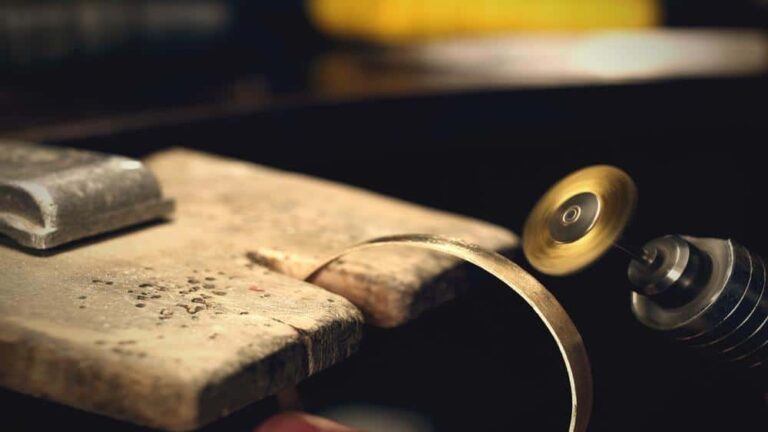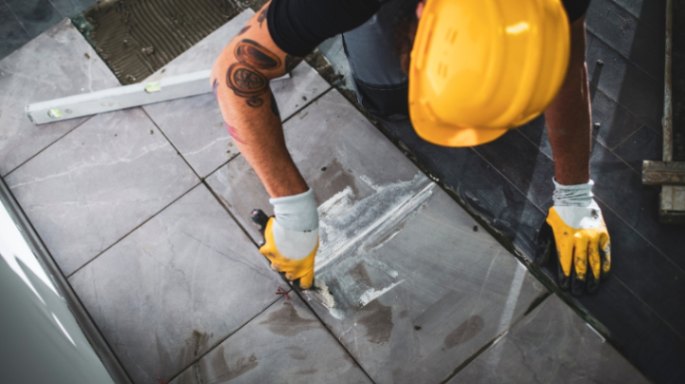Are you struggling to remove epoxy resin from plastic surfaces? Don’t worry. We’ve got you covered! Whether it’s accidental spills or hardened resin, this comprehensive guide will provide effective techniques on how to get rid of epoxy resin on plastic effortlessly. Discover the best methods to restore your plastic items to their original state, from household items to specialized products. Say goodbye to stubborn resin stains and restore the beauty of your plastic surfaces!
1. Definition of Epoxy Resin
Epoxy resin is a type of adhesive that is commonly used in many DIY projects and construction works. It is a strong and durable material that can be used to bond several types of materials, including plastic. However, when it is time to remove it, it can be a challenging task if you do not know the right method. This article will guide you through the process of removing epoxy resin from plastic and the tools and chemicals you will need to make the job easier.
I. Importance of removing epoxy resin from plastic
Why remove epoxy resin from plastic? There are several reasons why you might need to remove epoxy resin from plastic. For example, you may have used too much, and it is dripping down the sides, or you may have made a mistake and need to start over. Whatever the reason, it is important to remove the epoxy resin properly so that you can use the plastic again.
II. A brief overview of the steps involved in removing epoxy resin from plastic
Here is a brief overview of the steps involved in removing epoxy resin from plastic:
- Identify the type of plastic you are working with. Different types of plastic react differently to various methods of removing epoxy resin, so it is important to know what you are dealing with.
- Choose a method of removal. There are three main methods of removing epoxy resin from plastic: physical removal, chemical removal, and heat removal.
- Gather the necessary tools and chemicals. Depending on the method you choose, you may need different tools and chemicals to help you remove the epoxy resin.
Now, let us go into more detail with each step.
III. Importance of using appropriate tools and chemicals
It is crucial to use the appropriate tools and chemicals when removing epoxy resin from plastic because using the wrong tools or chemicals can result in damage to the plastic.
For example, if you use a heat gun that is too hot, it can cause the plastic to melt or deform. Similarly, if you use a chemical that is too strong, it can damage or discolor the plastic.
When choosing tools and chemicals, it is important to consider the type of plastic you are working with and the method of removal you are using. For example, if you are using chemical removal, make sure you choose a chemical that is safe for the type of plastic you have.
In conclusion, using the appropriate tools and chemicals when removing epoxy resin from plastic will help you achieve the best results and minimize the risk of damage to the plastic.
2. Understanding the Type of Plastic
I. Different types of plastic and their properties
Plastics come in several types, each with its own unique properties. Understanding the type of plastic, you are working with is important when it comes to removing epoxy resin from it.
II. Different Types of Plastic and Their Properties:
- Polyethylene (PE) – a lightweight and flexible plastic that is commonly used for packaging
- Polypropylene (PP) – a strong and flexible plastic that is commonly used for containers
- Acrylic (PMMA) – a clear and lightweight plastic that is commonly used for display cases
- Polyvinyl Chloride (PVC) – is a tough and durable plastic that is commonly used for pipes
III. How different types of plastic react with epoxy resin
Several types of plastic can react differently with epoxy resin, and it is important to understand these differences when selecting the right method for removing it.
For example, acrylic plastic may be more prone to cracking when exposed to certain chemicals, while PVC may be more resistant to those same chemicals.
Importance of knowing the type of plastic for selecting the right method for removing epoxy resin
Knowing the type of plastic, you are working with will help you determine the best method for removing the epoxy resin.
For example, if you have delicate and clear acrylic plastic, you may want to use a gentle mechanical method such as scraping rather than a harsh chemical method. On the other hand, if you have tough and durable PVC plastic, you may be able to use a stronger chemical method.
In conclusion, understanding the type of plastic you are working with is crucial when it comes to removing epoxy resin from it. This will help you determine the best method and tools for the job, ensuring that the plastic is not damaged in the process.
3. Physical Removal
I. Physical Removal
The physical removal method involves using tools to scrape or cut away the epoxy resin from the plastic. This method is best for delicate plastics or for removing smaller amounts of epoxy resin.
II. Tools Needed for Physical Removal:
- Razor blade or utility knife
- Plastic scraper
- Heat gun (optional)
III. Step-by-Step Instructions for Physical Removal:
- Soften the epoxy resin by heating it with a heat gun.
- Scrape away the softened resin with a plastic scraper or razor blade.
- Repeat the heating and scraping process until all the resin is removed.
IV. Tips and Tricks for Physical Removal:
- Work slowly and carefully to avoid damaging the plastic.
- Use a new razor blade or a sharp plastic scraper for the best results.
- If the resin is particularly stubborn, try using a heat gun to soften it before scraping.
It is important to note that this method can be time-consuming and requires patience, but it is a safe and effective way to remove epoxy resin from delicate plastics.
In conclusion, the physical removal method is a great option for those who are looking for a safe and gentle way to remove epoxy resin from their plastic items. With the right tools and a little patience, you can successfully remove the resin and restore your plastic to its original condition.
4. Chemical Removal
The chemical removal method involves using chemicals to dissolve the epoxy resin from the plastic. This method is best for removing large amounts of resin or for plastics that are difficult to scrape.
I. Chemicals Needed for Chemical Removal:
- Acetone
- Isopropyl alcohol
- Mineral spirits
II. Step-by-Step Instructions for Chemical Removal:
- Clean the surface of the plastic to remove any dirt or debris.
- Apply the chemical of your choice (acetone, isopropyl alcohol, or mineral spirits) to a clean cloth.
- Rub the cloth onto the surface of the resin until it begins to dissolve.
- Wipe away the dissolved resin with a clean cloth.
- Repeat the process until all the resin is removed.
III. Tips and Tricks for Chemical Removal:
- Test the chemical on a small, inconspicuous area of the plastic before using it on the entire surface to ensure it will not damage the plastic.
- Be sure to wear gloves and work in a well-ventilated area to avoid inhaling fumes.
- If the resin is particularly stubborn, try using a plastic scraper or razor blade in conjunction with the chemical.
It is important to note that some chemicals may damage certain types of plastic, so be sure to check the manufacturer’s guidelines before using any chemical products.
In conclusion, the chemical removal method is a great option for those who are looking for a quick and easy way to remove large amounts of epoxy resin from their plastic items. With the right chemicals and a little hard work, you can successfully remove the resin and restore your plastic to its original condition.
5. Heat Removal
The heat removal method involves using heat to soften the epoxy resin, making it easier to remove from the plastic. This method is best for removing tiny amounts of resin or for plastics that can withstand hot temperatures.
I. Tools Needed for Heat Removal:
- Heat gun or hair dryer
- Plastic scraper or razor blade
II. Step-by-Step Instructions for Heat Removal:
- Clean the surface of the plastic to remove any dirt or debris.
- Use a heat gun or hair dryer to apply heat to the resin.
- As the resin begins to soften, use a plastic scraper, or razor blade to gently scrape it away.
- Wipe away any remaining residue with a clean cloth.
III. Tips and Tricks for Heat Removal:
- Test the heat on a small, inconspicuous area of the plastic before using it on the entire surface to ensure it will not damage the plastic.
- Be sure to wear gloves and work in a well-ventilated area to avoid inhaling fumes.
- Move the heat source constantly to avoid overheating the plastic and causing damage.
It is important to note that heat can damage certain types of plastic, so be sure to check the manufacturer’s guidelines before using any heat products.
In conclusion, the heat removal method is a great option for those who are looking for a quick and effortless way to remove lesser amounts of epoxy resin from their plastic items. With the right tools and a little patience, you can successfully remove the resin and restore your plastic to its original condition.

6. FAQs (Frequently Asked Questions)
I. What are the different types of plastic?
There are several types of plastic, including polyethylene, polypropylene, polyvinyl chloride (PVC), and more. Each type of plastic has different properties and reacts differently with chemicals.
II. How do I know which type of plastic I have?
The type of plastic can usually be found on the bottom of the item or in the manufacturer’s information. You can also conduct a burn test to determine the type of plastic.
III. What tools do I need for physical removal?
For physical removal, you will need a plastic scraper or razor blade and a clean cloth.
IV. What chemicals do I need for chemical removal?
For chemical removal, you will need a solvent specifically made for removing epoxy resin.
V. What is the difference between chemical and heat removal?
Chemical removal involves using a solvent to dissolve the resin, while heat removal involves using heat to soften the resin so it can be scraped away.
VI. Can I use a hair dryer instead of a heat gun for heat removal?
A hairdryer can be used for heat removal, but a heat gun is more effective and efficient.
VII. Is it safe to use chemicals for removing epoxy resin from plastic?
Chemicals can be safe to use when handled properly, but they can also be hazardous. Always follow the manufacturer’s instructions and take necessary safety precautions, such as wearing gloves and working in a well-ventilated area.
VIII. What safety precautions should I take when using chemicals or heat?
When using chemicals, always wear gloves and work in a well-ventilated area to avoid inhaling fumes. When using heat, be sure to avoid overheating the plastic and causing damage.
IX. Can I reuse the plastic after removing the epoxy resin?
Yes, you can reuse the plastic after removing the epoxy resin.
X. What should I do if I cannot remove all the epoxy resin?
If you cannot remove all the epoxy resin, you may need to try a different method, using a stronger chemical, or heat source. If all else fails, consider seeking the help of a professional.
7. Conclusion
I. Recap of the steps involved in removing epoxy resin from plastic
Removing epoxy resin from the plastic can be a tricky task, but with the right tools and methods, it can be done effectively. In this article, we have discussed three methods for removing epoxy resin: physical removal, chemical removal, and heat removal.
II. Importance of taking safety precautions
It is important to keep safety in mind when attempting to remove epoxy resin, especially when using chemicals or heat. It is also important to try different methods and find the one that works best for your specific situation.
III. Importance of trying different methods until finding the most suitable one
In summary, understanding the type of plastic, using the appropriate tools and chemicals, and following the step-by-step instructions for each method can help you effectively remove epoxy resin from plastic.





